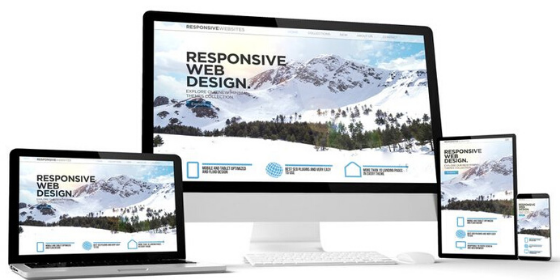Why Responsive Web Design Can’t Be Ignored
Remember when surfing the internet was strictly a desktop affair? Fast forward to today, and mobile devices account for a whopping 54% of global web traffic. If you’re still questioning whether your business needs a mobile-friendly website, it’s time to wake up and smell the digital coffee.
In this in-depth guide, we’ll delve into the undeniable reasons and benefits of embracing responsive web design.
Table of Contents
- A Brief History of Web Browsing
- What is Responsive Web Design?
- Statistics That Make the Case
- The Advantages of Responsive Sites
- Why Search Engines Love Responsiveness
- Improving User Experience
- Best Practices in Responsive Web Design
- Conclusion and Next Steps
A Brief History of Web Browsing
The year 2014 was a game-changer. IBM reported that mobile web traffic surpassed desktop traffic for the first time ever on Thanksgiving Day. Since then, this trend has not just continued—it’s accelerated.
With mobile devices becoming more powerful and affordable, their usage has skyrocketed. It’s not just a phase; it’s the new norm.
What is Responsive Web Design?
Defining the Term
Responsive web design is the art and science of designing web pages that adapt to varying screen sizes, devices, and orientations.
This ensures a consistent and engaging user experience, whether your visitor is using a desktop, tablet, or smartphone.
Why Does It Matter?
Imagine going to a store where the aisles are too narrow for your shopping cart. Frustrating, right? The same principle applies online.
A website not optimized for mobile is essentially turning customers away at the digital door.
Discover Professional Web Design Services Here
Statistics That Make the Case
Let’s throw some hard numbers into the mix:
- 74% of users are more likely to return to mobile-friendly websites.
- 52% of users said that a bad mobile experience made them less likely to engage with a company.
- Mobile devices are expected to drive around 79% of global internet usage by the end of this year.
These statistics make it abundantly clear that responsive web design isn’t a luxury; it’s a necessity.
The Advantages of Responsive Sites
Simplified Management
In the early days of mobile browsing, businesses would manage two versions of their website: one for desktops and another for mobile devices.
With responsive design, one site serves all devices, making it easier to manage updates, content, and SEO strategies.
Cost-Effectiveness
A single website means single maintenance and development costs. This is a more economical long-term strategy, freeing up resources for other essential business operations.
Improved Conversion Rates
A responsive website offers a better user experience, which leads to higher conversion rates, better brand perception, and a more effective customer journey.
Read More on Why Minimalist Web Design Works
Why Search Engines Love Responsiveness
Search engines like Google have shifted towards mobile-first indexing. This means that the mobile version of your site is the one that will be primarily used for ranking and indexing.
SEO Benefits
Being mobile-friendly enhances user experience, which in turn reduces bounce rates and boosts website rankings in search results.
Google has made it clear that they reward sites offering robust mobile experiences.
Learn More About SEO in Web Design
Improving User Experience
Why User Experience Matters
User experience (UX) is not just a buzzword; it’s an integral part of web design that directly impacts conversions and customer loyalty.
A well-designed, responsive site minimizes loading times, eliminates the need for pinch-zooming, and ensures that call-to-action buttons are easily clickable.
Reduced Bounce Rates
A responsive site decreases bounce rates significantly. Users are likely to stick around and engage more with the website, ultimately leading to higher conversion rates.
Optimize Your Content for Individuals for Better UX
Best Practices in Responsive Web Design
Prioritize Content
Not all content is equally important. Design your site so that the most critical information is easily accessible, regardless of the device used.
Use Scalable Vector Graphics (SVG)
SVG ensures that your images look sharp on all screens and are quick to load.
Test, Test, and Test Again
Before launching, make sure to test your website on various devices to ensure it’s truly responsive.
Conclusion and Next Steps
We’re in a mobile era where responsiveness can’t be ignored. Adopting responsive web design is not just a fad; it’s a business imperative.
If you haven’t already, it’s time to upgrade your website to be mobile-friendly.
So, What’s Next?
Consider hiring a professional web design company to ensure your site is up to modern standards.






